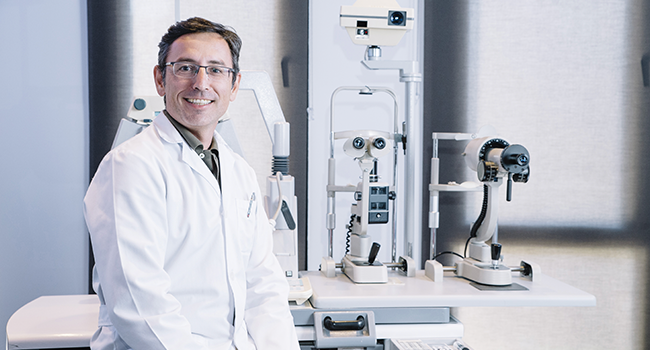Why Selecting an Eye Doctor Optometrist is Important for Your Eyes
Why Selecting an Eye Doctor Optometrist is Important for Your Eyes
Blog Article
Discovering the Latest Technological Innovations in Optometry and What They Mean for Eye Doctors
From the precision of Optical Coherence Tomography to the nuanced insights provided by AI-driven analysis tools, these advancements are setting brand-new standards in patient assessment and treatment. As these improvements permeate the technique, eye doctors are faced with the difficulty of accepting these tools to boost patient end results.
Technologies in Diagnostic Tools
Progressing the field of optometry, technologies in analysis tools have actually transformed the way eye treatment experts analyze and diagnose aesthetic disabilities and eye problems. The past decade has seen substantial technological innovations, making it possible for even more comprehensive and exact analyses.
One more key advancement is the intro of innovative corneal topography systems, which map the surface curvature of the cornea with accuracy. These devices are especially valuable for suitable call lenses and diagnosing corneal conditions. Furthermore, electronic retinal imaging has transformed traditional ophthalmoscopy, using thorough, panoramic views of the retina that promote extensive aesthetic examinations.
The development of wavefront aberrometry has actually also been critical, allowing the analysis of refractive errors with unequaled precision (Eye Doctor Optometrist). This modern technology assists in customizing restorative lenses and boosting medical end results for refractive surgical procedures. Jointly, these diagnostic developments empower optometrists to provide remarkable individual treatment, guaranteeing very early intervention and tailored therapy strategies, ultimately boosting aesthetic health and wellness results
AI in Person Administration
Building on the foundation of advanced analysis tools, the unification of artificial knowledge (AI) in client monitoring represents a transformative leap for optometry. AI systems are significantly utilized to boost effectiveness, precision, and customization in patient care.
In addition, AI-driven systems facilitate streamlined individual interactions and management procedures. Automated organizing, online consultations, and customized follow-up strategies not only improve person fulfillment but also maximize time management for professionals. These systems can triage individuals based on the seriousness of their problems, ensuring that those in critical requirement obtain prompt attention.
Moreover, AI boosts decision-making by offering optometrists with evidence-based suggestions and therapy pathways. By integrating information from electronic health and wellness documents, AI tools provide understandings that inform medical choices, decreasing the danger of mistakes and boosting person outcomes. As AI continues to progress, its function in individual management will likely increase, improving the landscape of optometric treatment.
Developments in Retinal Imaging
In the realm of optometry, retinal imaging has actually seen remarkable technical advancements that are boosting diagnostic capabilities and patient care. Technologies such as Optical Coherence Tomography (OCT) and fundus photography have actually reinvented how eye doctors analyze the retina and imagine.
Boosted imaging methods like OCT angiography are more refining analysis accuracy. This non-invasive technique maps blood circulation in the retina, offering crucial understandings right into vascular health without the need for dye injections. In addition, flexible optics modern technology is being incorporated into retinal imaging systems to fix eye aberrations, supplying unprecedented photo quality. Such developments help with the recognition of min retinal modifications that can symbolize disease progression.
Furthermore, innovations in fabricated intelligence are enhancing retinal imaging by making it possible for automatic analysis of large datasets. These systems help eye doctors in determining patterns a measure of pathology, thereby enhancing diagnostic precision and performance. Jointly, these advancements are transforming retinal imaging right into a cornerstone of modern-day eye treatment, enhancing outcomes and expanding restorative opportunities.
Teleoptometry's Growing Role
Teleoptometry is significantly coming to be an essential element of eye care, driven by developments in data and analysis devices. As optometry welcomes have a peek at this site electronic change, teleoptometry promotes remote consultations, allowing optometrists to expand their services past traditional boundaries. This is specifically advantageous in rural and underserved areas where access to specialized eye care is frequently limited. By leveraging high-resolution video conferencing and advanced retinal imaging, optometrists can carry out extensive eye tests from afar, guaranteeing prompt medical diagnosis and treatment.
The assimilation of expert system (AI) further improves teleoptometry, allowing the evaluation of aesthetic data and helping in the detection of eye problems such as glaucoma and diabetic person retinopathy. AI-powered formulas can quickly analyze complex imaging information, supplying optometrists with important insights that reinforce professional decision-making.
Additionally, teleoptometry supports continuity of care with seamless assimilation with electronic health documents (EHRs), enabling eye doctors to preserve thorough individual histories. This ensures that people receive constant and tailored care also when speaking with various specialists.
Despite these advantages, obstacles continue to be, consisting of making sure information safety and security and handling individual expectations. Teleoptometry stands for a substantial stride towards more obtainable, efficient, and patient-centered eye treatment. As innovation develops, its function is positioned to expand additionally.

Future Fads in Eye Treatment
A myriad of cutting-edge fads is established to reshape the future of eye treatment, driven by technical advancements and the advancing needs of patients. One considerable fad is the combination of expert system (AI) in diagnostics, which assures to boost the accuracy and effectiveness of eye useful source evaluations. AI algorithms can assess substantial amounts of data from retinal pictures, potentially discovering problems like diabetic retinopathy and glaucoma earlier than conventional approaches.
Furthermore, customized medication is gaining traction in optometry, with hereditary screening notifying tailored treatment strategies. This strategy aims to maximize patient results by customizing interventions to private genetic accounts. Wearable modern technology, such as smart call lenses, is also imminent, supplying real-time tracking of intraocular pressure or sugar degrees, therefore supplying constant insights right into eye and systemic health and wellness.
The adoption of augmented reality (AR) and online truth (VIRTUAL REALITY) in training and client education is one more emerging trend. These technologies offer immersive experiences that can enhance understanding and abilities both for individuals and optometrists. As these patterns evolve, optometrists must stay abreast of technical advancements to provide sophisticated care, making sure better person results and contentment in the dynamic landscape of eye treatment.
Conclusion

Collectively, these analysis developments encourage eye doctors to provide premium person treatment, making certain very early treatment and customized treatment strategies, ultimately enhancing aesthetic wellness outcomes.

As these innovations proceed to advance, eye doctors need to adjust and include them right into method, eventually maximizing process performance and boosting the standard of eye care delivered to individuals.
Report this page